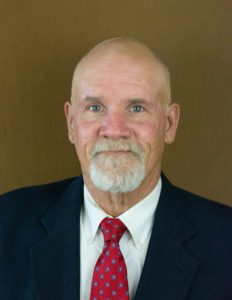Today I will be making an analogy to the sport of football. It is one of the most popular sports in the Permian Basin. Most companies, large or small, evaluate their respective effectiveness as a safe company once a year. Traditionally it is after the Christmas season and the start of the new year in our industry. Usually the budgeting for the company and its departments is prior to the new year. ]
However, OSHA and most governing entities (e.g. RRC, TCEQ, EPA, etc.) base the results and success by the calendar year. In high school, college, and the pros, the teams that don’t get invited to “the Dance,” aka the playoffs, take a small respite and then start immediately planning, re-evaluating, and or rebuilding at the start of a new year as well. You do not have to wait until the end of the year to evaluate the strategies and necessary adjustments for success.
The parallel between sports and job safety has been referenced before. The criterion of improvement is analyzed, evaluated, and dissected in order to reveal areas of opportunity. Then there is a general consensus agreed upon for a new plan for the new year. Some companies completely revamp plans or procedures, some completely overhaul the existing programs, and others push numbers and go into metrics for the evaluation process. Normally, this is when most companies react or decide to make changes to their respective programs. I propose this is not necessarily the wisest action to take. If it’s a team from the metro area in pro football, (I did not say the Cowboys), there are usually coaching changes, personnel changes, and/or strategy changes. In other words, the “cleaning house” method is incorporated. Radical changes are not always the answer to success.
There are situations that call for “cleaning house.” The trick is to know when “cleaning house” is effective versus when tweaking a program is to be preferred.
However, the successful teams always know when something is not working. It doesn’t take them a year to figure it out. The “numbers” reveal quickly whether something is or is not working. Identification of those numbers and their meaning is usually based on historical figures and performance. However, some strategies don’t parlay into the same results year after year. So what changes every year to year? In keeping with my theory, the answer is personnel.
Some people retire, some show leadership and/or work ethic, and others just do exactly what they have to do, simply to keep a spot. Usually under-performers are let go quickly. Or sometimes, they are benched, re-trained, or replaced. There is such a thing as potential but it is a judgment call as to the propensity or proclivity of that performer’s motivation to deliver. That is where good coaches come into play.
I digress. The point that I’m trying to make is that in order for a well developed plan to show results, the end of the season is not the optimum time to make changes. If it’s not working, chances are it will not morph or develop into success by the end of the year.. Plans have to be executed. Flexibility in strategies, situational awareness and the ability to adapt is paramount.The specialty coaches have to make quick adjustments. A good safety plan has to be dynamic and needs to be executed to standards but should remain dynamic. The definition of dynamic: “a force that stimulates change or progress within a system or process.” This is where a coach pulls the player off to the side and yells, cajoles, encourages or informs the
player that he needs to get his head in the game as a teammate. They tell them to hit the reset button, like the one on a computer. Make the adjustment and perform. If he is not up to task immediately, then replace him and take him out, if his head is not in the game. Don’t wait until the game is lost. “But coach, it was a freak accident.” To which I would retort, “As opposed to a planned one?” Get your head in the game.
My recommendation is to have a game plan. Adjust the game plan if needed. It may be a perfect game plan. But if you are not producing results, then rethink your definition of “perfect.” Don’t stick with a “perfect” game plan that is not producing results! Make subtle changes. Adjust the sails slightly. Safety is as dynamic as any game. Know the people and their strengths. Get their head in the Game. Have a scout up in the stands that’s not afraid to state the obvious if it is incongruent with the head coach’s thoughts. Some people need encouragement. Some people need a wakeup call. Some people develop bad habits. Some have a blatant disregard for any kind of authority. They are dangerous. Like anything else, the way you get to Carnegie Hall is practice, practice, practice.
Do not encourage non performers. Consult with your HR person. If these employees are not a good fit to the team, give them the opportunity to excel in something else, somewhere else. Like I always say, you can put boots in the oven but it doesn’t make them biscuits.
You are only as strong as your weakest link. People are our most valuable asset. Invest (time and money) for the best. Regardless, if their head is not in the game, you will achieve the same results. There are as many strategies and philosophies in safety as there are in football. The stale thinking begets stale results. It’s time to get our own head in the game.
Remember, it’s not how many hits you have in baseball that counts. It is how many times that you reach home safely! Be safe! —Dust
Dusty Roach is a safety professional based in Midland. He is also a public speaker on subjects of leadership and safety, and he maintains a personal website at dustyroach.com.










